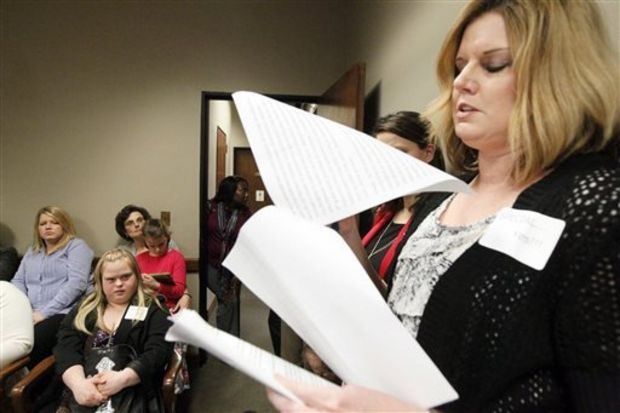

JACKSON, Mississippi (AP) — It was grant money to pay for school security, but two-thirds of Mississippi’s public school districts weren’t interested.
At Lt. Gov Tate Reeves’ behest this spring, the Legislature set aside $5 million for the Mississippi Community Oriented Policing Services in Schools grant program. It was meant as the state’s response to the Newtown, Conn., school shooting, contributing $10,000 apiece toward armed school resource officers in Mississippi schools.
Last month, the state Department of Education awarded $1.57 million, for a total of 157 grants across 50 school districts. Bill Welch, the Department of Education official who oversaw the grant awards, said every district that applied was awarded money. But among the state’s five largest districts by enrollment, four did not apply — DeSoto County, Jackson city, Rankin County and Madison County.
“It seems like an amazing opportunity, and the fact that every district didn’t apply may raise some eyebrows,” said Kim LaFontaine, district administrator for Pearl Public Schools. The Rankin County district experienced Mississippi’s worst school shooting in 1997 when Luke Woodham, a 16-year-old student at Pearl High School, shot and killed two students and injured seven others after killing his mother in his home.
Like some other local officials, those at Pearl said their current officers don’t fulfill the nine distinct roles that the state’s grant program required, and that’s part of why they didn’t apply for the grants. The roles include not only providing security and writing a crisis response plan, but serving as a “law-related educator,” teaching character education programs such as Drug Abuse Resistance Education (DARE), mentoring at-risk students and acting as a liaison with the local youth court.
“Our school resource officers do not fulfill all nine of those roles,” LaFontaine said. She said Pearl has no formal counseling program and doesn’t use a character education curriculum. The district partially pays the city of Pearl for two officers provided to the district.
“We have a partnership that’s been established with the city for a number of years,” LaFontaine said.
Reeves said the grants that were awarded would “protect the precious lives of children.”
“I look forward to seeing even more schools take advantage of the program in the future,” Reeves said in a statement last month when the grants were announced.
With more than two-thirds of the money left, officials are seeking another round of applications, with that money to be awarded in January. Welch said the department might seek legislative authorization in January to increase the grant amount to $20,000, which would pay a larger share of an officer’s salary.
“We don’t want to give it back if we can help it,” Welch said.
Districts that didn’t seek the money gave a variety of reasons for skipping the program, including the nine roles required of officers.
“A lot of districts told me, that’s a lot of paperwork for $10,000,” Welch said of the 13-page application.
Some districts said they didn’t apply because they didn’t want to disturb their current arrangements.
“We have worked out excellent partnerships with law enforcement agencies and the board of supervisors to fund our SRO officers,” DeSoto County Superintendent Milton Kuykendall said in a statement. “This has proved to be reliable year after year. This matching grant is only funded a year at a time. If it is not renewed, the school district would have to make up the difference.”
Madison County Superintendent Ronnie McGehee, whose district also did not apply, said he didn’t want officers in classroom roles.
“I would rather that person be visible up and down the halls and in the parking lot,” he said.
The Madison district spends $160,000 a year for two sheriff’s deputies, plus one Madison police officer and two Ridgeland police officers. The cities of Madison and Ridgeland help pay.
Other districts, though, were happy to win funds. The Harrison County school district received 18 positions, most of any applicant. Tishomingo County received seven positions, which means each officer will protect about 450 students, the lowest officer-to-student ratio in the state, according to calculations by The Associated Press.
Lamar County Superintendent Ben Burnett, whose district was awarded $100,000, said the money allowed him to hire two officers.
“With the grant, we are able to cover two of our larger campuses which did not have an officer,” he wrote in an email. “Being a growing school district (increased by around 2,000 students in the past seven years), we want to increase our security efforts to match our population growth and this is a tremendous help.”



